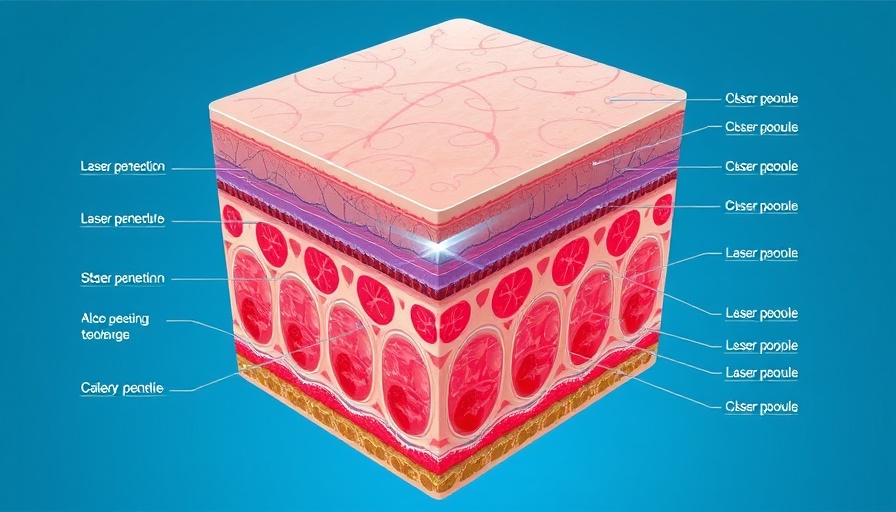
Understanding the Importance of Laser Treatment for Skin Discoloration
The advancements in laser technology have revolutionized dermatological practices, particularly for conditions like nevus of Ota, which leads to significant skin discoloration. Traditional treatment methods often fell short, resulting in a growing need for precision in laser irradiation techniques. With the introduction of picosecond laser (PSL) and nanosecond laser (NSL) treatments, clinicians are equipped with tools that can enhance effective therapeutic outcomes while minimizing the risk of side effects.
Delving into the Study Behind EICF
A recent study conducted by researchers from Osaka Metropolitan University aimed to refine the understanding of laser treatments through an in-silico meta-analysis. The research team, led by Postdoctoral Fellow Yu Shimojo and Professors Toshiyuki Ozawa and Daisuke Tsuruta, developed the Excessive Setting Index of Clinical Fluence (EICF). This mathematical model critically evaluates the laser irradiation conditions required for optimal results, addressing the gaps in previous meta-analyses that did not account for appropriate settings. The foundational work was published in JAAD Reviews and highlights the impact of well-calibrated irradiation levels on treatment efficacy.
The Findings: Why PSL Shines Over NSL
The team’s comparison between PSL and NSL treatments for nevus of Ota revealed a clear advantage for PSL when applied under precise conditions. The efficacy of the PSL treatment was not only higher but it also maintained equivalent safety levels, thereby providing a more reliable treatment option. This evidence paves the way for more informed laser treatment protocols in clinical settings.
Implications for Patients and Medical Professionals
Understanding the EICF and its study findings carry substantial implications for patient care in dermatology. For medical professionals, it highlights the importance of customizing treatment plans based on individual patient needs while taking into account the appropriate irradiation conditions. For patients, it fosters a sense of reassurance that treatments they undergo are backed by scientific research, leading to more positive experiences and outcomes.
Future Opportunities for Research and Practice
As the field of laser treatment continues to evolve, the introduction of frameworks like the EICF presents opportunities for further research. Future studies could potentially explore additional skin conditions where precision laser treatment may yield beneficial results, thereby broadening the scope of care in dermatology. As more research is gathered around laser applications, the dialogue around its benefits and risks will evolve, empowering both clinicians and patients alike.
Conclusion: The Path Ahead in Laser Treatment
The emergence of innovative treatments like PSL offers great promise for addressing complex dermatological issues such as skin discoloration. By applying rigorous scientific methodologies like the EICF, the healthcare community can enhance the methods used in laser treatment, ensuring safer, more effective care pathways. Understanding these advancements will not only benefit practitioners but also help patients make informed decisions about their treatments.
 Add Row
Add Row  Add
Add 




 Add Row
Add Row  Add
Add 
Write A Comment